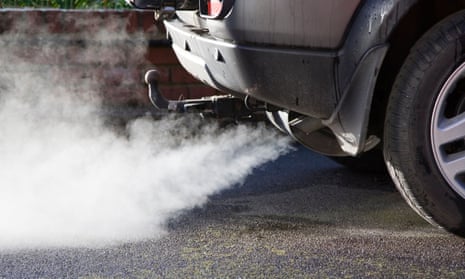Ministers have assured Britons suffering illegally high levels of air pollution that the EU’s new diesel car testing regime will put the motor industry on the “right path”.
But do not breathe your sigh of relief too deeply. The new ‘real world’ tests, which will commence next year, have been weakened, delayed and their final impact remains uncertain, experts say.
The “scandal” according to Julia Poliscanova, a policy manager at campaign group Transport & Environment, is that the limits the new tests are supposed to enforce have been watered down.
Last year the European commission announced exemptions that will allow new diesel cars to emit more than double the legal limit (80mg of NOx emissions per kilometre) for the first four years of the regime.
By 2021, diesel cars will still be able to exceed the limit by 50%, with no current plans to close the loophole. This effectively resets the limit at 120mg/km. These changes to a public health standard are justified, according to the commission, by the margin of error in the testing.
Carmakers reportedly lobbied the commission to give the industry time to adapt to the new testing regime. An unpublished estimate by the commission, seen by the Guardian, suggests that 30% of cars may have to be taken off the road by 2018 if the standard was implemented without these so-called “conformity factors”.
Environmental law firm ClientEarth has gone as far as to argue these exemptions are illegal under EU law.
The commission has been “very, very easy in that respect on the car industry,” said Professor Frank Kelly, director of King’s College Environmental Research Group, one of the UK’s leading authorities on air pollution.
“These standards came in in 2010 [but were enforced by laboratory tests]. Finally when it’s been recognised by governments and the EU, the industry has been given another four and a half years before it really needs to comply. In my mind, that’s too long.”
Chief executive of the Society of Motor Manufacturers and Traders, Mike Hawes, said: “Conformity factors do not mean a relaxation of Euro 6 limits, which cars will still have to meet in the lab. It reflects the many and often extreme variations of real-world driving conditions.
“Given the severity of this new test and the newness of the technology required to measure these small levels of pollutants, the commission has also allowed a margin for error within the functioning of the test equipment.”
Poliscanova said: “It’s not a question of technology because these companies meet more stringent standards in the US, so the technology exists.”
Research by the International Council on Clean Transportation has found that most car manufacturers deploy selective catalytic reduction (SCR) technology to help them meet US standards.
But in the EU, where tests and limits are more lax, the same cars are fitted with cheaper, less effective lean NOx traps. A clear outlier to this trend was VW, which has infamously used defeat devices to beat tests. Poliscanova said the additional cost to consumers to make cars fitted with SCR was between €100 (£80) and €300 each. The European Automobile Manufacturers’ Association (ACEA) has estimated that meeting the Euro-6 emissions standard costs manufacturers around £1,500 per car produced.
One third of passenger cars in Europe now run on diesel, so even small exemptions add up. Research by Policy Exchange calls the commission allowance “huge” and concluded the proposed exemptions would see London’s air quality continue to breach EU public health laws until at least 2025.
Kelly said low emissions zones, electric buses and zero emissions taxis would all be necessary to ameliorate continued diesel car pollution.
“There’s just so many diesel vehicles on the road - that includes private cars, taxis and buses - so we need further restrictions below what we are even aiming for, which has been delayed by 10 years,” he said. Paris is in a similar situation, which has lead to plans to ban diesel cars from the French capital altogether by 2020.
Additional concerns have been raised about the final implementation of the new testing regime.
Emissions tests are only mandatory to assess whether a new car can go on the market. But Kelly said there are no provisions to monitor how the exhaust filtration systems perform as they age, meaning a car might meet the standard when it rolls out of the dealership, but within months could be polluting at much higher levels.
“Until vehicles are retested in some sort of MoT programme, we won’t really have that information,” said Kelly.
Another open question is who will conduct the testing. The current laboratory testing is conducted by national regulators and some is done in-house by manufacturers. The new tests do not require such large facilities as they are attached to vehicles and taken on the road. The commission has given no indication of how oversight of the new regime will be managed.
Kelly said: “If they are going to have a whole series of different parties licensed to undertake these tests, then one may question what the reliability is across those different testers.”
“A good test can still be manipulated if it’s not done in a transparent and accountable manner,” said Poliscanova.

Comments (…)
Sign in or create your Guardian account to join the discussion